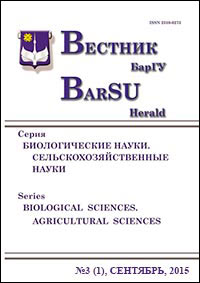MORE ON COLD RESISTANCE OF BUCKWHEAT VARIETIES UNDERTHE CONDITIONS OF LOW POSITIVE TEMPERATURES
Keywords:
buckwheat, cold resistance, low temperature, primary rootAbstract
The results of the response of buckwheat varieties differed by ploidy levels and determination degrees of growth processes to low positive temperatures are presented. It is shown that at +10°C, cold resistance of primary roots of tetraploid forms is 1.5 times higher than that of diploid ones. Changing of plant morphotype of tetraploid varieties influences positively the resistance to cold stress as compared to the diploid varieties.
It is established that laboratory germination at a temperature of +10°C in tetraploid samples at 5.0% was higher compared with diploid and amounted to 39.3%. However, the extent of this variability in the ratio was ranging from 23.0 to
46.5% from 22.0 to 45.0%, respectively. The presence of populations in which germination ability in these conditions above 40.0% allows selection for cold resistance, as in tetraploid and diploid populations.
Table 5. Fig. 2. Ref.: 12 titles.
Downloads
Published
Issue
Section
License
Copyright (c) 2023 Вестник БарГУ Серия "Биологические науки. Сельскохозяйственные науки"
Это произведение доступно по лицензии Creative Commons «Attribution-NonCommercial» («Атрибуция — Некоммерческое использование») 4.0 Всемирная.
Авторы сохраняют за собой право заключать определенные договорные соглашения, касающиеся неисключительного распространения опубликованной версии работы (например, размещать ее в институциональном репозитории, публикация в книге) со ссылкой на ее первоначальную публикацию в этом журнале.





